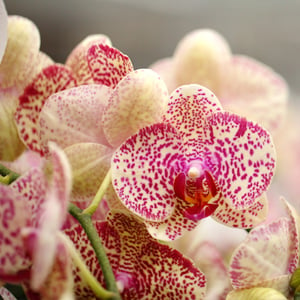
 The most striking feature on an orchid is its blooms. Orchid blooms are also the most sensitive part of the plant, so you must handle your buds with care. But there is a lot more to a Phal’s bloom than just beauty. Here, we discuss four major facts about blooms that will help you to care for your orchid!
The most striking feature on an orchid is its blooms. Orchid blooms are also the most sensitive part of the plant, so you must handle your buds with care. But there is a lot more to a Phal’s bloom than just beauty. Here, we discuss four major facts about blooms that will help you to care for your orchid!
The official species name for Phals is Phalaenopsis amabilis, quite a mouthful for the average, non-botanist to pronounce. And if it hadn’t been for Swedish naturalist Peter Osbeck, you would still have to refer to these flowers by their full name today. During a voyage in the mid 1750s to China, Osbeck mistakenly identified a cluster of orchids as moths. They became commonly known as “Moth Orchids” from that point on. Look closely at your Phalaenopsis blooms. Do you think they resemble tiny moths in flight?
When you buy an orchid, look for a plant with healthy blooms and buds. During transportation, if an orchid is mishandled or is not placed within ideal climate conditions (humidity, temperature, light, etc.) before reaching its final destination, it will abort some (or all) of its buds. Carefully inspect the plant to make sure unopened buds are a green color and blooms are strong.
Just Add Ice Orchid blooms can last two to three months or longer, depending on care and other factors, and orchids typically rebloom once every nine to twelve months. In order to increase your chance for a long blooming period and to prevent “bud blast,” or premature dropping of buds, keep the below tips in mind when caring for your plant:
If your blooms have fallen after their normal cycle (anywhere from two to four months), then your plant is resting. You can verify the overall health of your plant by checking its roots and leaves. Flowering depletes your plant of energy, so during this period, your plant is building up its energy for the next blooming cycle. Continue to water your orchid with three ice cubes per week. You can also trigger reblooming with the tips found here!
There is more than meets the eye to an orchid’s blooms. They feature a rich history and complexity that exists far beneath the surface.
Do you have any tips to share about orchid blooms that could benefit others? Head on over to our Facebook page to share some of your knowledge with the orchid community!

Copyright Just Add Ice® Orchids 2023